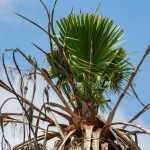Extreme winter weather took a toll on many plants. But there are a few that fared surprisingly well. Check out our list to toughen up your landscape.
Viburnum, pittosporum, xylosma, prostrate rosemary and Indian hawthorn suffered significant mortality during the big freeze. Fortunately, other species, both native and introduced, responded remarkably well.
Here is my list of shrub species that can endure both drought and freeze, aka typical South Texas weather. All species listed are deer-resistant.
Low Shrubs, maximum 6 feet tall
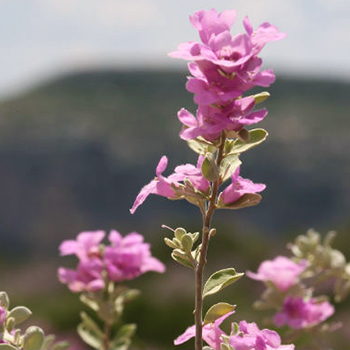 Cenizo (sun) Cenizo comes in many colors and sizes – from silver to green, and flowers for pale blue to purple. Look for the new compact varieties of ‘Compacta’, ‘Convento’ and Thunder Cloud’. |
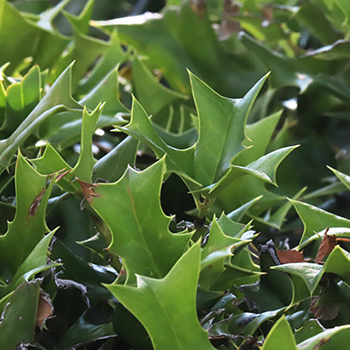 Chinese holly (sun or shade) Chinese holly is only one of many selections. Consider dwarf ‘Burford’ or ‘Carissa’ holly. |
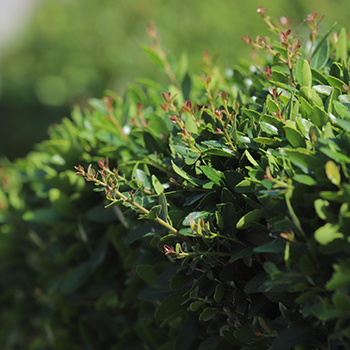 Dwarf yaupon (sun or shade) Yaupon ‘nana’ is one of the most frequently used shrubs for our area and its well justified. It requires only limited maintenance and tolerates most sites, whether shady or sunny, rocky or clay soil. |
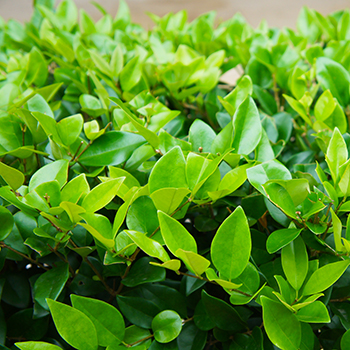 Wax leaf ligustrum (sun or shade) The old-fashioned, non-native wax leaf ligustrum came through the freeze surprising well and must now be considered a front-runner for any formal hedge. |
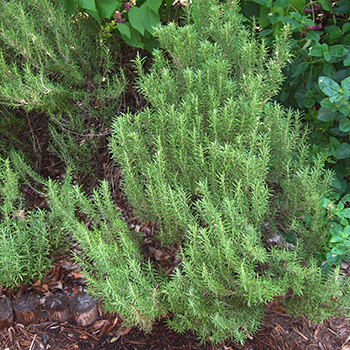 Upright rosemary (sun) Upright rosemary did much better than its prostrate cousin and should be considered the de facto replacement for all rosemary. Look for these selections: ‘Gorizia,’ BBQ Skewers, ‘Blue Spires’ or ‘Boule’. |
Tall Shrubs, 12 feet or taller
Arizona cypress (sun)
Arizona cypress is native to West Texas and beyond, and well-known for its radiant silver-hued foliage. It’s also extremely drought tolerant and pest free.
Hollies (sun or shade)
- Holly hybrids are generally crosses between American, European and Asian hollies. I favor ‘Nellie R. Stevens’ and ‘Fosters #2’.
- Yaupon is a native holly that prefers shade and well-watered conditions. ‘Pride of Houston’ is a popular selection, but the standard yaupon does just as well in my opinion.
Junipers (sun)
- Native junipers are extremely drought-tolerant and low-maintenance — they never have to pruned or watered. Eastern red cedar and Ashe juniper are two examples of native junipers.
- Chinese junipers are some of my favorite junipers with their pyramidic shape and rich color. My favorites are ‘Blue Point’, ‘Keteleer’ and ‘Spartan’.
Photina
Chinese photina (Photinia serrulata) has white flowers with pink centers. Red fruit develops in the early fall.
Sumac (sun or shade)
- Evergreen sumac is a common native throughout the Hill Country and is basically maintenance-free, but will have to be pruned once every three to five years.
- Flame-leaf sumac grows to be a large shrubby tree that is best suited to flat areas. It may be difficult to find, but is often spotted at annual plant fairs in Kendall County.
Yew (shade)
The yew for today is the Japanese yew. This species may grow to be a small tree of 25-30 feet. The minimum distance to a building is 12 feet and 20 feet between trees.
These species offer it all: privacy, frost- and drought-tolerance, and minimal maintenance.



